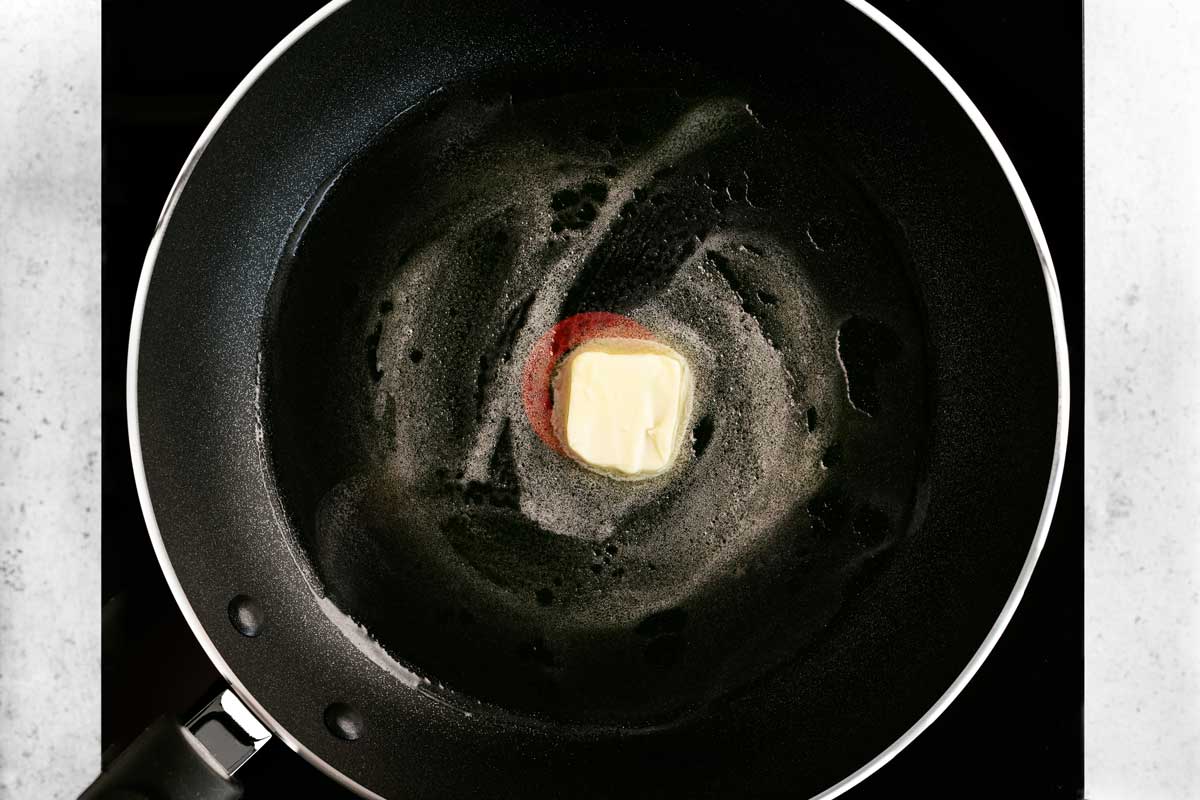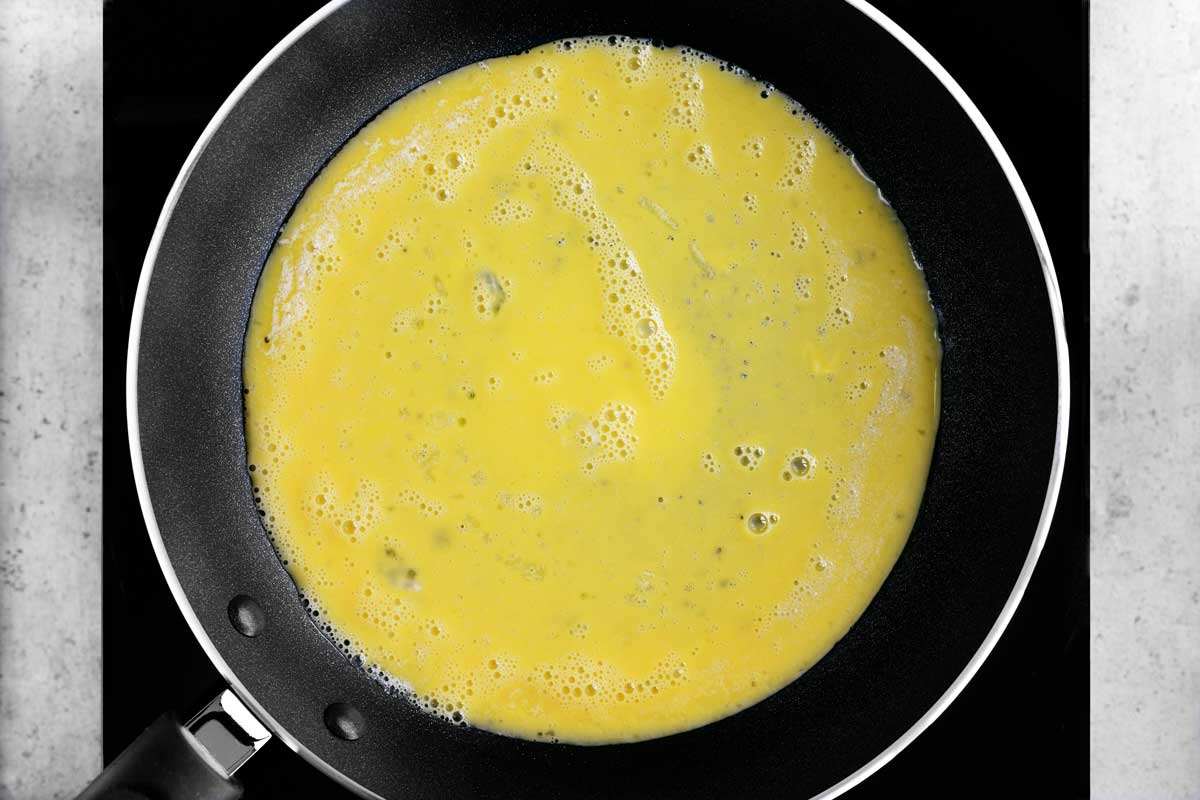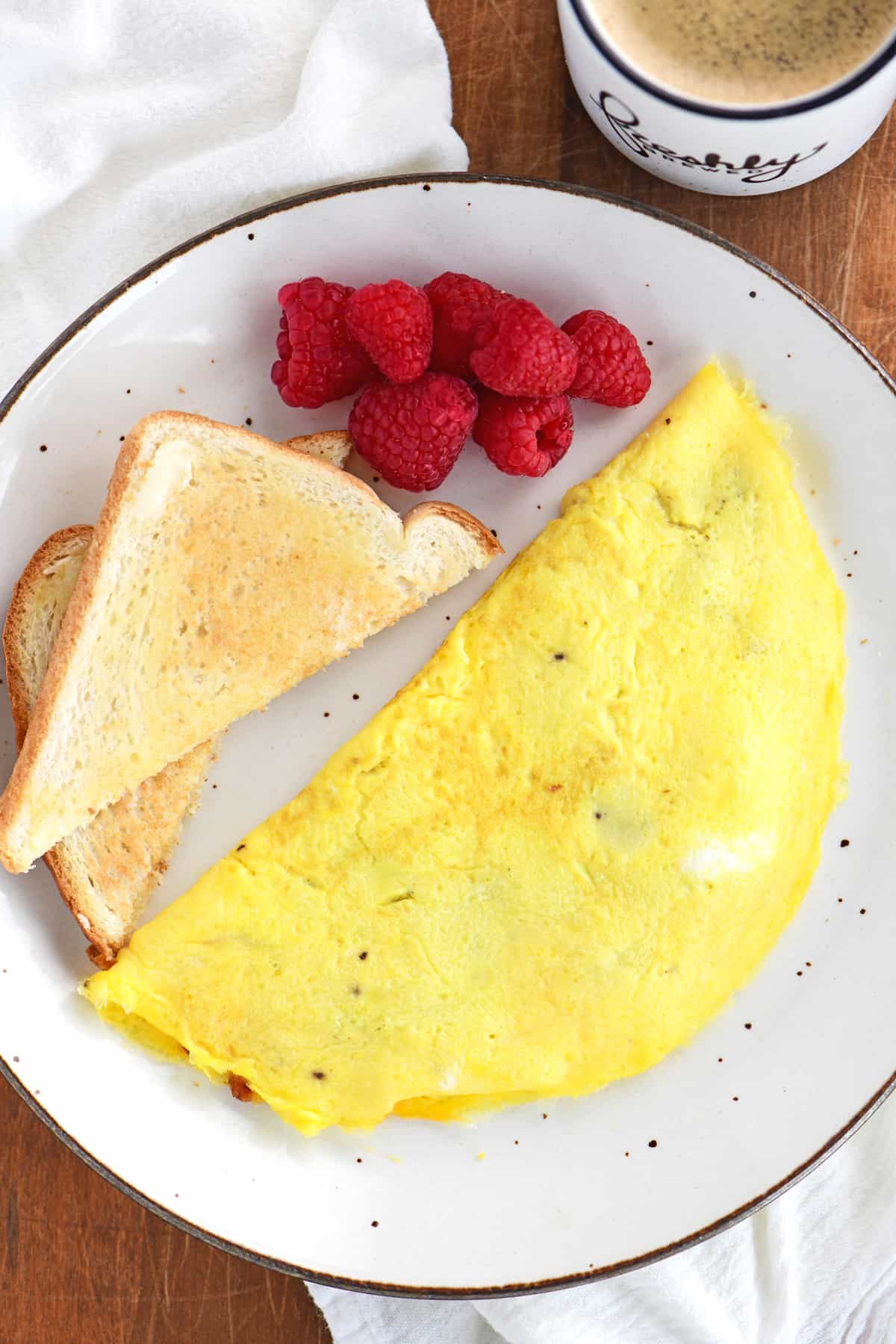This simple omelette recipe is easy to make and very versatile. With just a few basic ingredients, you can make a protein-packed breakfast!
We love eating eggs for breakfast and dinner with fresh fruit, breakfast potatoes, bacon, and toast.

Several years ago, Brian set out to learn the best way to make an omelet and tried lots of different methods. After lots of experimentation, we finally figured out this delicious omelette recipe and wanted to share it so that you can learn how as well!
What You’ll Find In This Post
What You’ll Love About This Recipe
Simplicity
This is a simple omelet recipe that is easy to make. Most people already have the tools and ingredients to make it. Don’t get overly caught up in making them look perfect. It takes practice, but in the meantime, every omelet you make will taste fantastic, even if it doesn’t look picture-perfect.
Versatility
Whenever we go to visit our friends in South Dakota, we have a special tradition of making omelets for breakfast. There is usually a houseful of people, so we make them in more than one skillet at a time. We’ve taught some of the other adults how to make an omelet so that we can take turns cooking and eating. Every adult and child gets to pick what kind of omelette they want, from basic cheese to fully loaded, and therefore, everyone ends up happy.

Omelette Recipe Ingredients and Substitutions
One of the best things about our simple omelet recipe is that it only requires a few ingredients! We often make them when we need a quick breakfast or even dinner.
- Eggs: Use 2-3 large eggs for each omelet. Although you can use more eggs, the more eggs you use, the bigger skillet you will need and the harder it can be to handle.
- Water: We like using a little water to thin the eggs, which helps them spread out more in the pan and makes them lighter in texture. Another option would be to use milk instead of water.
- Salt & Pepper: A dash of salt and pepper add flavor. You can add additional salt and pepper to taste after when you start to eat the eggs.
- Butter: A little butter in the pan will help to keep our eggs from sticking and adds extra flavor. You can also use olive oil if you prefer.
- Cheddar Cheese: We used cheddar cheese because we like the flavor it adds, but you can use whatever cheese you desire.
- Bacon: Crispy bacon bits are our favorite protein to add to omelettes and sometimes, we put even more on top!
Things To Put In Omelettes
If you’re looking for omelet fillings, then you’re in luck because the possibilities are endless! Here are a few recommendations:
Note: It is best to precook and warm your fillings (meat and veggies) prior to adding them to your omelets.
- Cheese: cheddar, american, pepper jack, or swiss
- Meat: bacon bits, diced ham, or crumbled sausage
- Vegetables: tomatoes, onions, peppers, mushrooms, spinach, avocado, or potatoes
- Toppings: sour cream, gravy, pico de gallo, or cheese sauce
How To Make An Omelet
All you need to do to make a delicious omelette is whisk your ingredients, pour them into a skillet, cook for a few minutes, add your fillings, and serve!

Prepare: Whisk together the eggs, water, salt, and pepper with a fork.

Butter: Melt the butter in a small-to-medium non-stick skillet over medium heat.

Pour: Pour the egg mixture into the pan, tilting it so that the eggs cover the bottom of the pan.

Cook: Use a silicone spatula to pull the eggs across the pan so that they start to cook. Occasionally tilt the pan to allow the runny eggs to fill in bare spots.

Toppings: Once most of the runny eggs have cooked (you can check by tilting the pan), sprinkle shredded cheese and cooked bacon bits over half of the omelet.

Serve: There are a couple of ways that you can fold and serve an omelet. The way we make them is to lift the bare side of the eggs, folding it over onto the side with toppings. Then, slide the omelet out of the pan onto a plate.

The second way is to tilt the skillet and slide the side with the fillings onto a plate and use the edge of the skillet to fold the bare side over the fillings.

Variations
This simple omelet recipe is a versatile dish with many variations to try! From using different fillings to adding tasty toppings, go ahead and get creating. Here are a couple of popular recommendations:
Ham and Cheese Omelette Recipe
For a ham and cheese omelette, substitute cooked, cubed ham for bacon! The other steps will remain the same.
Egg White Omelet
To make an egg white omelet, simply substitute two egg whites for each egg, and follow the instructions we’ve provided.
Western Omelet
If you want to spice up your eggs, try making a western omelet! Add diced bell peppers, diced ham, and onions along with the rest of your fillings.

Storage
- Make Ahead: If you’d like to make it easier for yourself to prepare eggs for breakfast, you can cook any raw ingredients ahead of time and store them for later use. You can also store cooked omelettes in the fridge or freezer and reheat them as desired.
- Refrigerator: Leftovers can last in the fridge for up to 3 days. Store them in an airtight container lined with a paper towel.
- Reheating: You can reheat your them in a skillet, in the oven, in the microwave, or even in an air fryer!
- Freezer: Omelettes can last in the freezer for up to 2 months. Wrap them in plastic wrap and put them in a freezer bag for storage.
Frequently Asked Questions
The only difference is the spelling. The standard American English spelling is omelet, while the standard French spelling is omelette. That being said, there are many different ways to make them, and many countries around the world have their own varieties.
We’ve had the best results when using a small, non-stick pan with sloped sides. The 10.5-inch T-Fal pan shown in this omelette recipe is an affordable option, and we also like our All-Clad omelette pan.
Try making a fresh fruit salad or buttermilk biscuits. Or serve a breakfast classic like buttermilk pancakes, French toast, or homemade waffles!
Want more egg recipes? Try these next:
- This Egg Bake recipe is a great option for overnight guests or for your family. It’s a one-dish breakfast casserole that’s packed with bacon, eggs, and cheese.
- Bacon Egg and Cheese Breakfast Burritos are a delicious and easy way to start your day. You can make them ahead of time and freeze them so they’re ready to go when you need them.
- Scrambled eggs are a basic cooking skill that everyone should know. These fluffy, creamy scrambled eggs are perfect for breakfast, lunch, or dinner.
- Puff Pastry Breakfast Pizza is a fun and easy way to enjoy breakfast. It’s made with a light, flaky crust topped with cheese sauce, scrambled eggs, cheddar cheese, and bacon.

Omelette Recipe
Ingredients
- 2 large eggs see note 1
- 2 teaspoon water
- 1/8 teaspoon salt
- 1/8 teaspoon black pepper
- 1 tablespoon butter
- 1/4 cup shredded cheddar cheese
- 2 tablespoon chopped bacon see note 2
Instructions
- Whisk together the eggs, water, salt, and pepper with a fork.
- Melt the butter in a small-to-medium non-stick pan over medium heat.
- Pour the egg mixture into the pan and tilt so that the eggs cover the bottom of the pan.
- Use a silicone spatula to pull the eggs across the pan so that they start to cook while occasionally tilting the pan allowing the runny eggs to fill in bare spots.
- Optional step if needed: use the silicone spatula to gently lift the cooked eggs while tilting the pan so that the runny eggs can flow underneath.
- Once most of the runny eggs have cooked (you can check by tilting the pan) sprinkle shredded cheese and cooked bacon bits over half of the omelet.
- Lift the bare side of the omelet and fold it over onto the side with toppings.
- Slide the omelet out of the pan onto a plate.





Alexis says
Made an omelette today for the first time with this recipe and it’s so much easier than I thought it would be!! It was so good I can’t wait to make it again and try some different variations!